Economic Indicators Press Release, 7-7-14

Press Contacts: Tom Garritano (312-386-8609 or tgarritano@cmap.illinois.gov)
Justine Reisinger (312-386-8802 or jreisinger@cmap.illinois.gov)
Regional data and analysis show challenges and opportunities facing metropolitan Chicago's economy
Chicago Metropolitan Agency for Planning launches web "microsite" with a series of economic indicators for the seven-county region
CHICAGO, July 7, 2014 -- A new collection of data on gross regional product, household income, and employment is shedding light on broad economic trends in the metropolitan Chicago region.
The Chicago Metropolitan Agency for Planning (CMAP) today launched these initial regional economic indicators as part of a new web microsite -- www.cmap.illinois.gov/economy/regional-economic-indicators -- that in coming weeks will see the release of further data on topics related to workforce, industry clusters, and innovation. The site is a resource for the economic development professionals, planners, and others who seek to understand the complex factors that shape our region's competitiveness in the global economy.
Tracking these indicators over time is part of CMAP's support for implementation of GO TO 2040, the comprehensive long-range plan that helps the region's 284 communities address transportation, housing, economic development, open space, the environment, and other quality-of-life issues.
So how is the regional economy doing? Over the past decade, metropolitan Chicago's gross regional product (GRP) has grown a modest 9.4 percent. After its peak of $488 billion in 2007, metropolitan Chicago's GRP dipped to $458.7 billion by 2009, and by 2012 it rebounded to $489 billion.
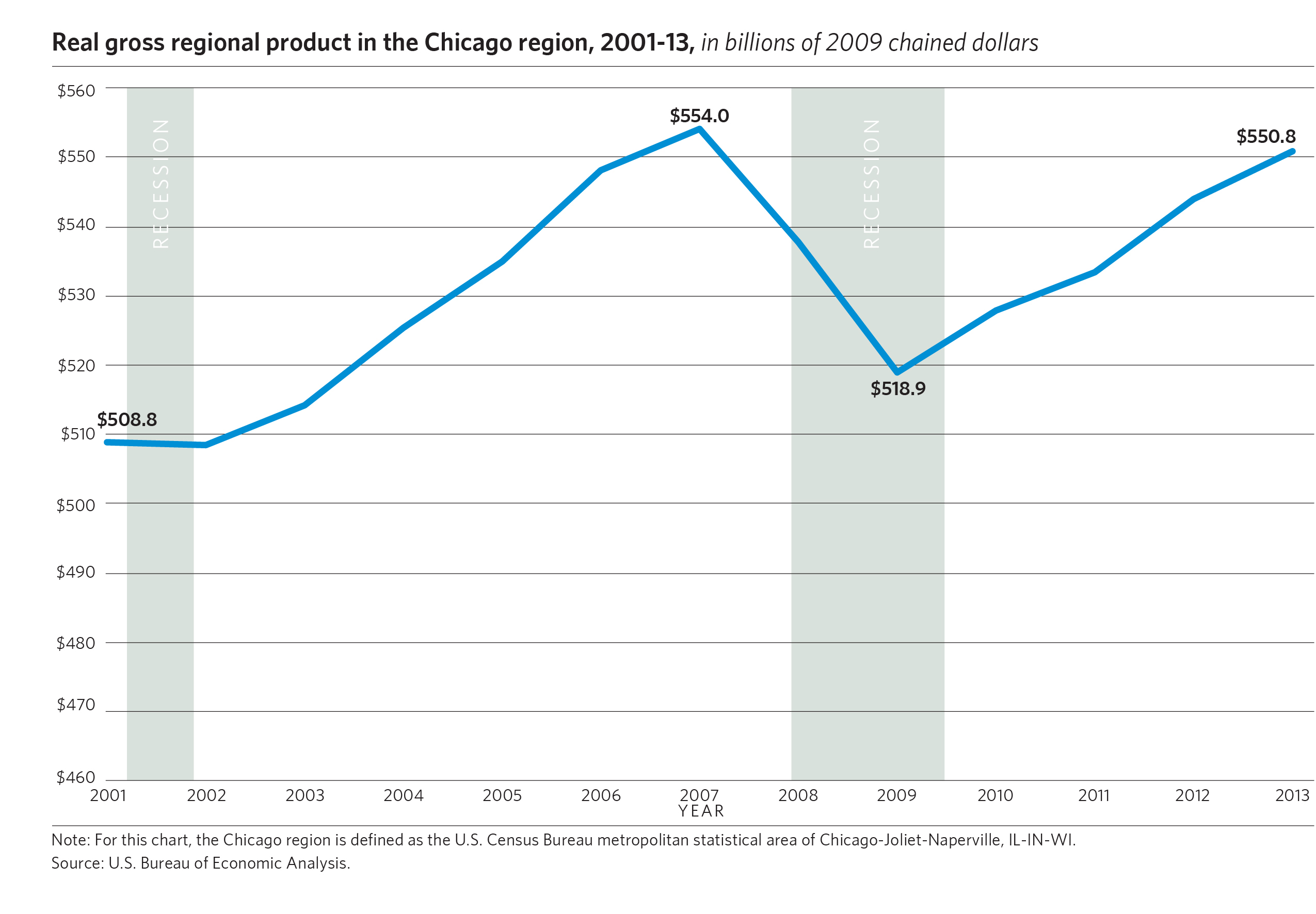
But over the same period, other regions such as New York (14.3 percent), Los Angeles (15.9 percent), and Boston (17.3 percent) grew faster.
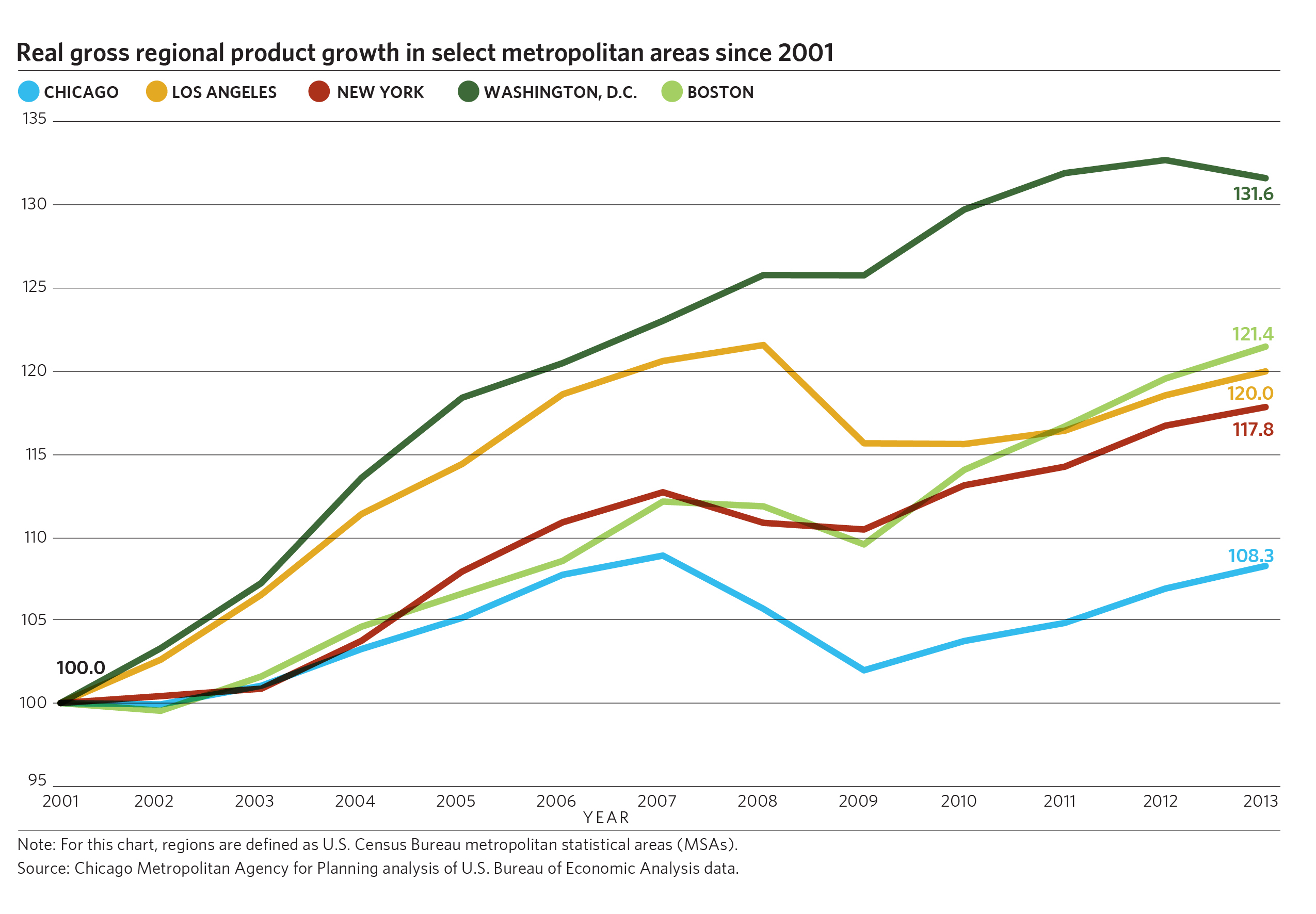
That is just a sampling of the economic trend indicators launched today by CMAP, which intends to update its regional economic indicators regularly as new data becomes available. The following is a preview of three additional sets of economic indicators that will be released in coming weeks. (On request to tgarritano@cmap.illinois.gov, reporters can have access to more indicators prior to release.)
Workforce
Because skilled labor is essential for regional economic growth, CMAP has compiled workforce indicators that include educational attainment and employment in science, technology, engineering, and math (STEM) occupations. As shown below, educational attainment in the Chicago region exceeds the national average and ranks on par with peer metropolitan areas. The number of jobs that require a postsecondary education is increasing, and access to continuing education is important for the competitiveness of workers and employers alike.
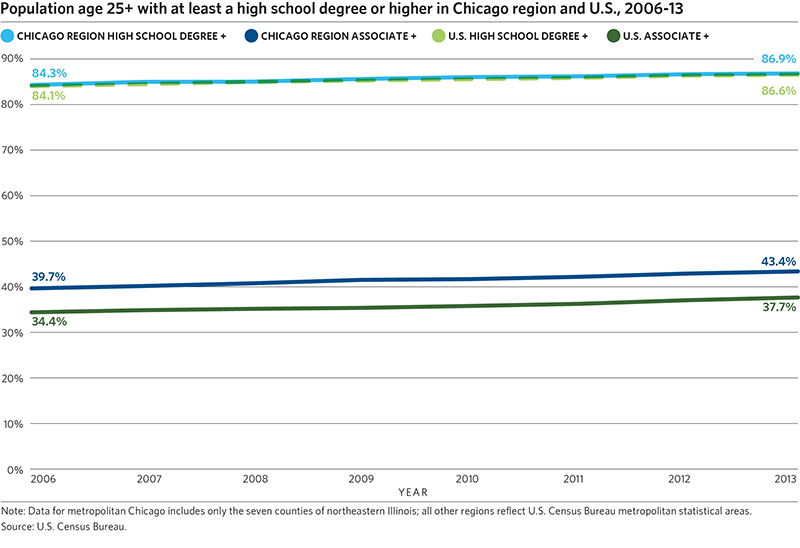
As evidence of the strong demand for highly skilled workers, STEM jobs here are growing faster than the region's rate for all jobs. Also worth noting: these fields have been more resilient than others in bouncing back from the recent recession.
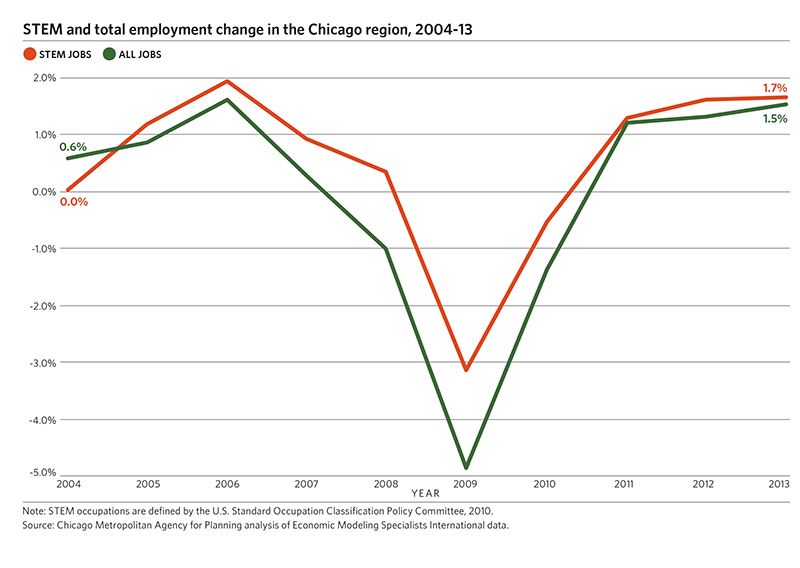
Industry Clusters
The local freight and manufacturing industry clusters play significant roles in metropolitan Chicago's economy. Freight employment grew 7.6 percent in the past decade, faster than the national average. Volumes at the region's rail-truck intermodal facilities have increased roughly 19 percent since 2009, helping to make Chicago the busiest port in North America.
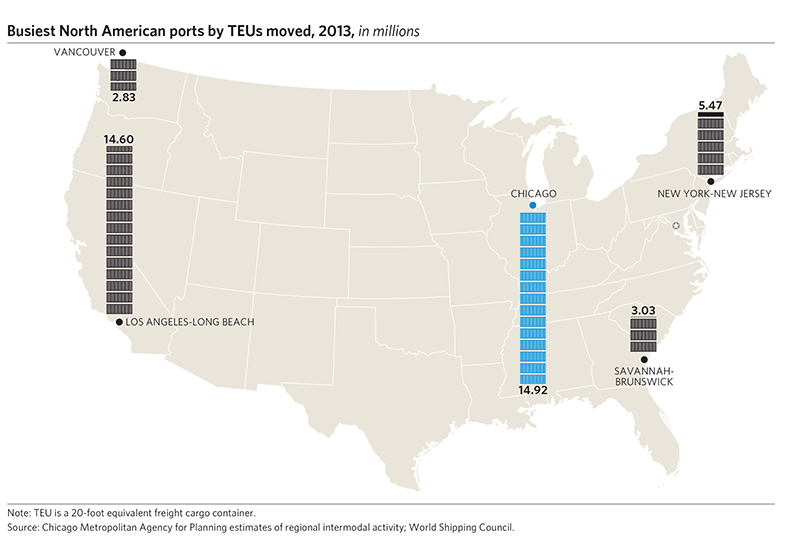
Manufacturing in our region, on the other hand, has been slow to recover from the most recent recession. It has seen only modest employment growth in recent years, and post-recession growth of exports has lagged behind the national average.
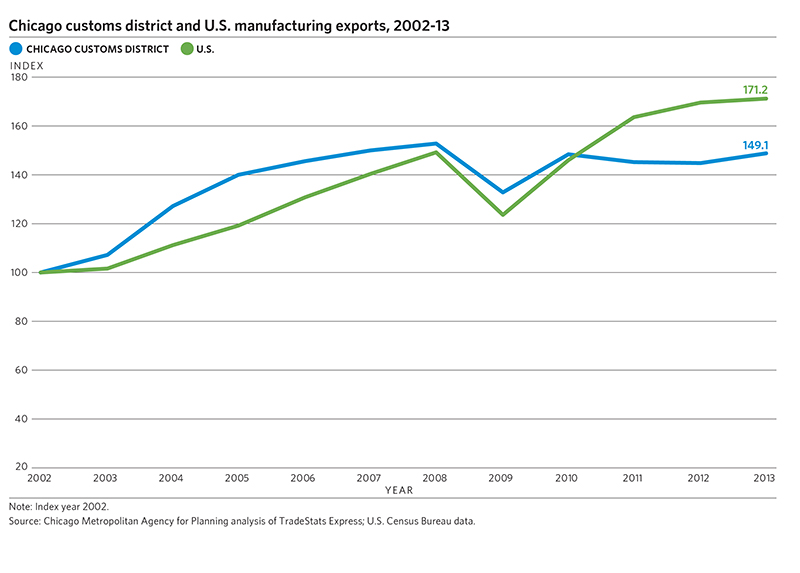
Innovation
New ideas and technologies help produce high-quality goods and services that keep metropolitan Chicago competitive in today's global marketplace. Measures of this innovation show metropolitan Chicago losing ground to peer regions. Even as research and development (R&D) employment increased 19 percent nationally from 2002-12, our region's total decreased 42 percent over the same period.

Patent production is a useful measure of regional innovation. In 2011 metropolitan Chicago produced 3,033 utility patents and accounted for 2.8 percent of national patent production. The Chicago region has the third largest metropolitan population in the U.S. and produced the fifth highest number of patents among all metropolitan areas over the last decade. While patent activity nationally has reached all-time highs, the proportion of the nation's patents originating in the Chicago region has slowly declined since 2005.
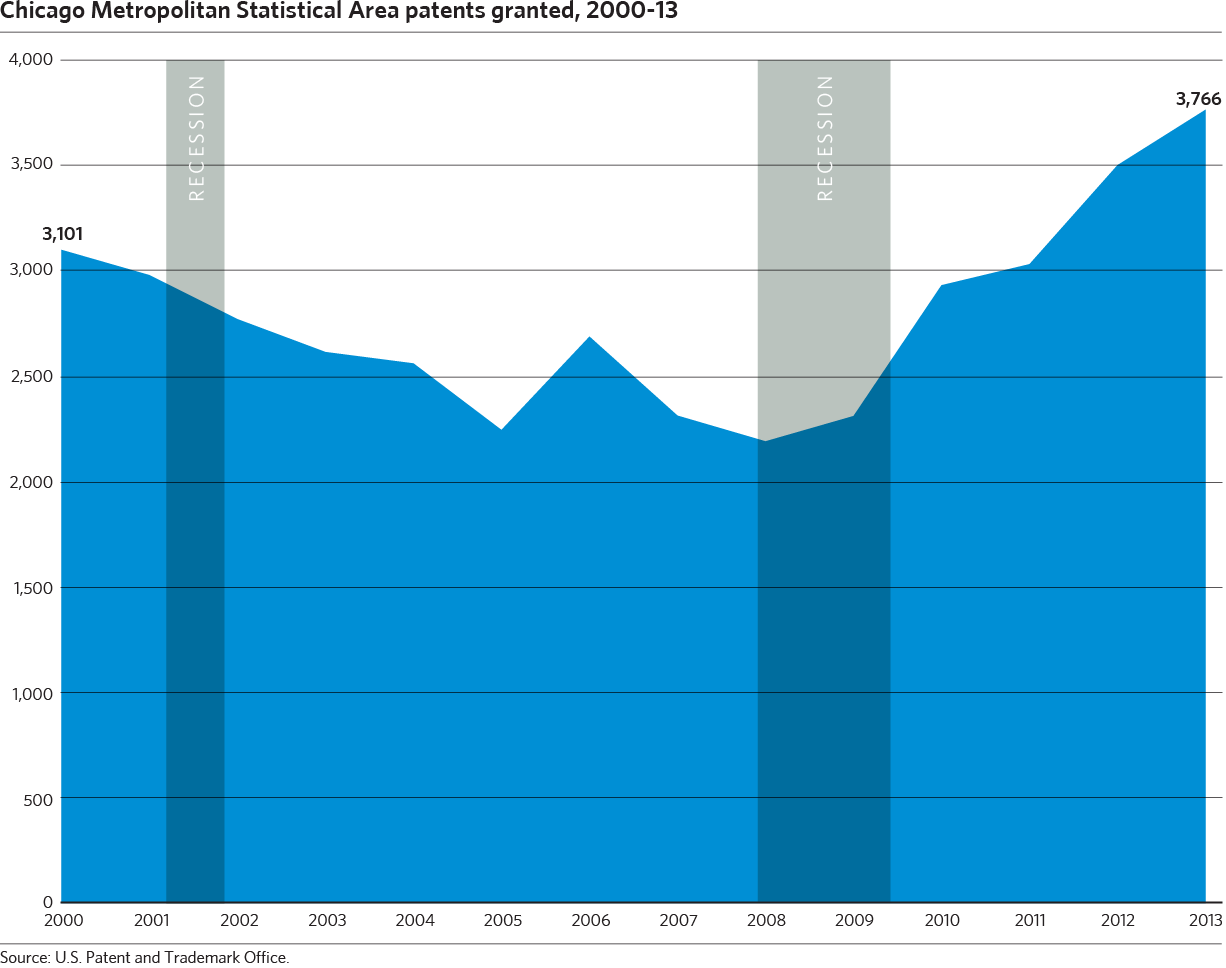
--END--
About CMAP. The Chicago Metropolitan Agency for Planning (CMAP) is the comprehensive regional planning organization for the northeastern Illinois counties of Cook, DuPage, Kane, Kendall, Lake, McHenry, and Will. By state and federal law, CMAP is responsible for producing the region's official, integrated plan for land use and transportation. The agency's innovative GO TO 2040 planning campaign develops and implements strategies to shape the region's transportation system and development patterns, while also addressing the natural environment, economic development, housing, education, human services, and other quality-of-life factors. See www.cmap.illinois.gov for more information.